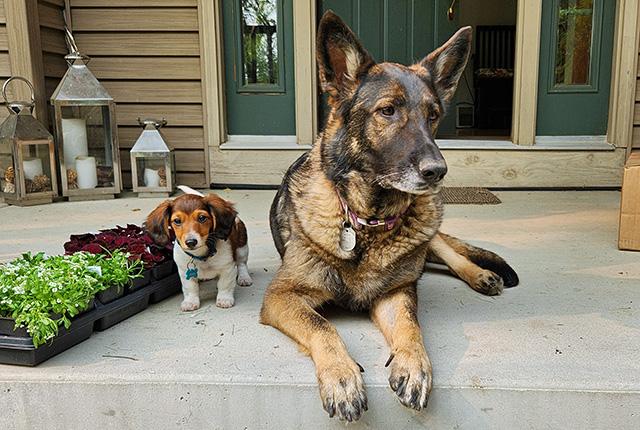
Dog Aging Project to develop canine frailty instrument
Veterinarians are using a trove of data from tens of thousands of dogs to set standards for health decisions and personalized care.Media Contact: Chris Talbott, 206-543-7129, talbottc@uw.edu

In human medicine, the ability to measure frailty is a vital aspect of geriatric care. Doctors may recommend one treatment over another based on an older person’s frailty score, and nursing homes may adjust care protocols as frailty increases.
Soon, frailty will be an important consideration in caring for pets, as well, thanks to the Dog Aging Project, a program led by the University of Washington School of Medicine and the Texas A&M School of Veterinary Medicine & Biomedical Sciences. The project includes more than two dozen member institutions.
By working with tens of thousands of community scientists and dog owners across the United States, the Dog Aging Project is creating a frailty instrument that can inform health decisions and personalize geriatric veterinary care for dogs of all shapes and sizes.
In an article recently published in Frontiers in Veterinary Science, the project’s veterinary team laid out their plan to develop this instrument with a variety of simple tests for dogs and questionnaires filled by dog owners and veterinarians.
“Dogs are living longer and longer because of the improving healthcare system and better nutrition,” said Dr. Rachel Melvin, a Dog Aging Project research team member and Texas A&M clinical trials intern. “We now have a bunch of old dogs whose owners want to do the best by them. Frailty scores help us do that by improving the personalized veterinary care those dogs receive.”
Frailty is a complex syndrome associated with aging. Because it considers physical, mental and emotional changes associated with aging, it is a better indicator of the body’s condition and overall health than age alone.
“Age is just a number, but it is a number that can carry a lot of baggage,” Melvin said.
“The higher your frailty score, the more likely someone is to fall down, need to be hospitalized or to have complications while in a hospital," she explained. "Likewise, a dog with a higher frailty score may be more at risk for complications after surgery and take longer to recover than a less-frail dog.”
Frailty assessment is important in veterinary medicine because dogs can vary greatly in rate of aging depending on their size and breed.
“A 12-year-old Great Dane and a 12-year-old Chihuahua are two vastly different animals in terms of health and body condition,” Melvin said.
Turning an objective description of health into a numerical score is a challenging concept that requires finding tests or measurements indicative of an individual’s risk of death.
“In human medicine, grip strength is one common measurement used because losing strength is a good indication that your body is aging,” Melvin said. “In dogs, it gets a little more difficult because we can't ask them to do a simple, repeatable task like gripping something. So our surveys will have lots of different questions that correlate with some of the common measurements used in human frailty scales.”
Researchers from Texas A&M, the University of Washington, the Virginia-Maryland College of Veterinary Medicine and the North Carolina State College of Veterinary Medicine also participated in the study.
- Adapted from a Texas A&M School of Veterinary Medicine & Biological Sciences news release.
For details about UW Medicine, please visit https://uwmedicine.org/about.